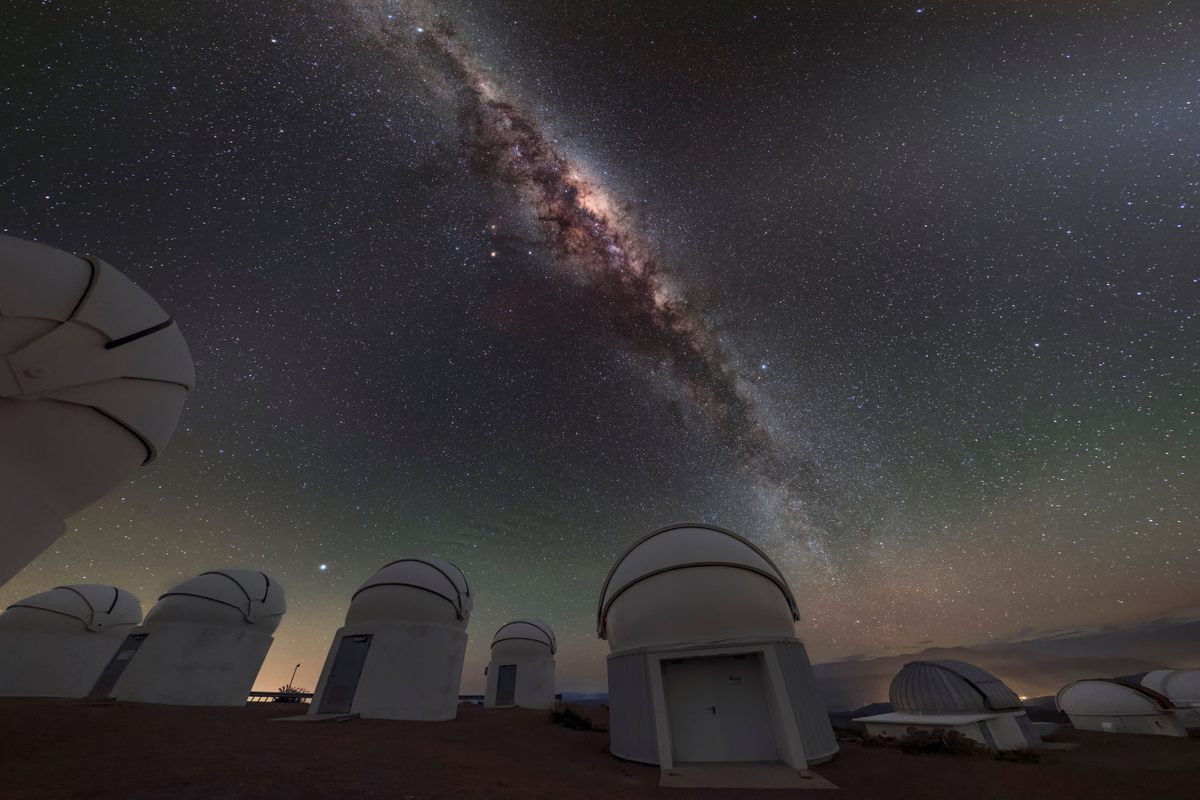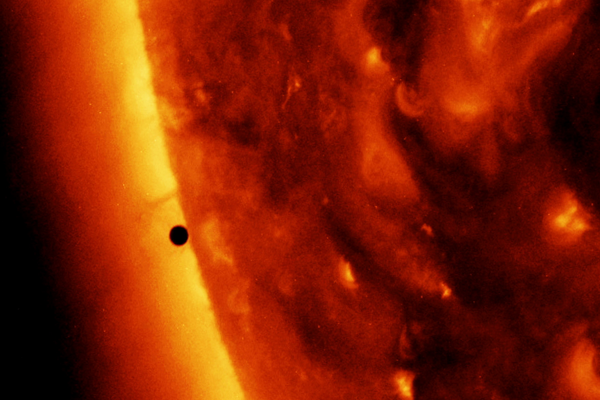The Milky Way’s Heart Is Disappearing—For Now
For most of us, the next few weeks are our last chance to glimpse our galaxy’s center, before the sun gets in the way.
Atlas Obscura’s Wondersky columnist Rebecca Boyle is an award-winning science journalist and author of the upcoming Our Moon: How Earth’s Celestial Companion Transformed the Planet, Guided Evolution, and Made Us Who We Are (January 2024, Random House). She regularly shares the stories and secrets of our wondrous night sky.
For people in the Northern Hemisphere, time is running short to see the lavender haze of our home galaxy’s heart. We have just a few weeks of chances left before the Milky Way’s central area disappears from view, owing to Earth’s orbit around the sun. But for now, the galactic center is still apparent, especially in the next couple of weeks, as the Sept. 29 full moon—the final supermoon of 2023—wanes. If you are somewhere you can see the Milky Way at night, lucky you. But, far more likely, if your night sky is bright with artificial light, it’s worth traveling to a darker location to bid our galaxy’s core farewell (for now).
I like to think of the Milky Way’s heart as a cosmic compass, proof that Earth is somewhere. We are on a planet, our planet is orbiting a star, and that star is orbiting the center of the entire galaxy, of which we are the tiniest imaginable part. The galaxy puts things in perspective. The Milky Way’s presence offers evidence of our insignificance. You can tell we are tiny by just how little of our home galaxy we can even see, let alone how little of it we have understood over the millennia.
The most famous origin story for our home galaxy, at least in the Western world, is the Greek myth of the goddess Hera and the infant Heracles (later, to the Romans, Hercules). The story says that Hera woke to find Heracles nursing, and, perhaps because she hated this half-human progeny of her husband Zeus’s affair, she pushed him off her breast. Her milk sprayed from horizon to horizon, causing the “milky circle” that spans the night sky. The name “galaxy” is actually a transliteration of the Greek word for milky circle or milky cycle: galaxias kyklos. So calling it the Milky Way galaxy is redundant, but no one will judge you if you do.
The Romans called it “via lactea,” which translates to Milky Way and is where we get the modern name. In China, and in much of modern Asia, it is the “silver river.” The Maya considered it the road to the underworld. In the Babylonian creation poem, Enuma Elish, it is the severed tail of the goddess Tiamat. To ancient Egyptians, it was personified as the goddess Hathor, symbol of motherhood and fertility, and the stripe across the sky was spilled milk.

Until the 20th century, most scientists thought our galaxy was the only one; the fuzzy structures that began appearing in powerful telescopes in the 18th century were thought to be simply “nebulae,” or clouds of gas. The great German philosopher Immanuel Kant was one of the first to suspect that they might be galaxies apart from our own, and later astronomers called them “island universes.” But many other scientists scoffed at this idea, claiming entirely separate galaxies would have to be unrealistically far away from us. Astronomer Edwin Hubble finally proved island universes were real by making a crucial observation of our nearest galactic neighbor, the Andromeda galaxy, in October 1923.
Today, we know that the Milky Way is a barred spiral galaxy—imagine a flat disk with spindly arms swinging outward, and a bar-shaped central concentration of stars around the humongous black hole at its heart. From Earth’s vantage, all we can see of this is part of the galactic disk, like looking at a vinyl record edge-on. The galaxy’s edge is visible all year, but we can only see its center from about April through October (depending on your latitude). The bright, cloudy heart of the galaxy sets shortly after sunset beginning in late October. To see it, look to the south after sunset—again, if you are somewhere with very low light pollution.
The galactic center is the quintessentially “Milky Way” region, which stands out in photos. With unaided eyes, you might pick up hues of lavender, orange, blue, white, black, and brown. It is hazy, foggy, crowded, spectacular, dense, beautiful. The dark regions within it are not empty, but are full of dust blocking our view; the brighter clouds are filled with young stars. The Hubble Space Telescope, named for the man who discovered our island universe, captured millions of stars packed tightly in its nucleus.
The galaxy’s center is mostly obscured by dust, and because we are on one outer arm of the galaxy, we will never see the whole thing. This makes it difficult to understand the galaxy. Still, professional astronomers perform a sort of galactic cartography by measuring how stars move around relative to each other. Since 2013, astronomers have been doing this using the Gaia satellite, a truly remarkable telescope that measures the motion of about a billion stars. If Hubble’s successor, the James Webb Space Telescope, is the glitzy celebrity of the space-observatory lineup, Gaia is the unsung hero of our home galaxy.
But you do not need Gaia, or its incredible astrometry, to appreciate the gleaming strip of stars that bisects the heavens above you. The glory of our galaxy’s center is worth observing one more time, before our own star blocks the view—at least until next spring.
Is there something you’d like to know about our brilliant night sky? Share your stargazing questions with us and you may see them answered in a future Wondersky column!









Follow us on Twitter to get the latest on the world's hidden wonders.
Like us on Facebook to get the latest on the world's hidden wonders.
Follow us on Twitter Like us on Facebook